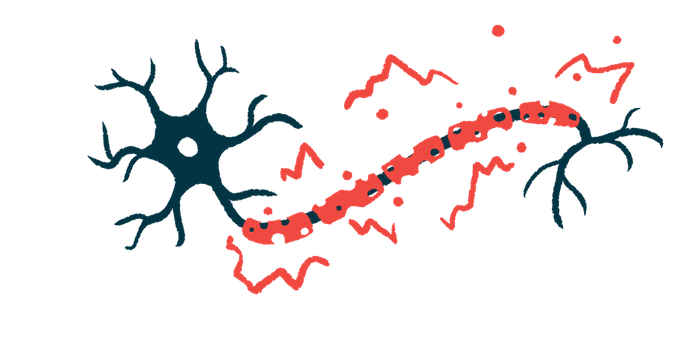Measure of myelin damage may aid demyelinating CMT diagnosis
CMAP duration ratio significantly differs between CMT, related rare disease
Written by |

A measure of the distribution of demyelination — myelin loss — may improve the diagnosis of demyelinating Charcot-Marie-Tooth disease (CMT) and better distinguish it from a related rare disease, a study in Japan found.
Specifically, the compound muscle action potential (CMAP) duration ratio was significantly lower in people with CMT than in those with chronic inflammatory demyelinating polyradiculoneuropathy (CIDP), a disease also marked by loss of myelin, the fatty sheath around nerve fibers that facilitates cell-to-cell communication.
“Adding the CMAP duration ratio to a routine [nerve conduction study] may improve the accuracy of the diagnosis of demyelinating CMT,” the researchers wrote.
The research, “Compound muscle action potential duration ratio for differentiation between Charcot-Marie-Tooth disease and CIDP,” was published in the journal Clinical Neurophysiology.
CMAP duration ratio may more accurately spot CMT than nerve ultrasound
In the most common subtype of CMT — CMT1A — myelin’s breakdown leads to a lower conduction velocity at both proximal (toward the body core) and distal (near the hands and feet) nerve fibers.
Nerve conduction studies can help diagnose CMT and distinguish it from other diseases also affecting the peripheral nerves — those that supply movement and sensation to the arms and legs. These studies measure the speed at which electric signals travel along nerve fibers, which is slower when myelin is damaged, a process called demyelination.
Demyelinating CMT can be wrongly diagnosed as CIDP, and vice versa, delaying proper treatment. As such, it is important to clearly distinguish these two demyelinating disorders.
Researchers at Kyoto Prefectural University of Medicine analyzed whether the proximal to distal CMAP duration ratio differed between demyelinating CMT and CIDP, and if it might serve as a diagnostic marker. Of note, CMAP is a measure of the muscle response to stimulation.
They retrospectively analyzed data covering 39 demyelinating CMT and 19 CIDP patients, who underwent nerve conduction studies and a nerve ultrasound at their center between 2009 and 2021.
Of the CMT patients, 35 were diagnosed with CMT1A and four with X-linked CMT or CMTX.
The proximal to distal CMAP duration ratio, calculated by dividing CMAP duration at the elbow by that obtained at the wrist, was significantly lower in CMT patients than in the CIDP group, both at the median nerve (1.08 vs. 1.5) and ulnar nerve (1.05 vs. 1.31) of the forearm and hand.
Other parameters also were significantly different between these groups, with CMT patients presenting a longer distal latency — the time it takes for the impulse to travel (median nerve: 9.3 vs. 5.2 milliseconds or ms; ulnar nerve: 6.6 vs. 4.3 ms) than those with CIDP. CMT patients also had a lower motor conduction velocity (median nerve: 23.1 vs. 31.0 meters/second, m/s; ulnar nerve: 22.6 vs. 32.3 m/s), and higher proximal to distal CMAP amplitude ratio (median nerve: 0.83 vs. 0.61; ulnar nerve: 0.8 vs. 0.7) than CIDP patients.
With nerve ultrasound, CMT patients showed a significantly larger nerve cross-sectional area, a measure of nerve enlargement, at all measured points than did CIDP patients. Nerve enlargement is a key finding in both diseases, the researchers noted.
Overall, this study indicates that the proximal to distal CMAP duration ratio may be more suitable for distinguishing between CMT and CIDP than measures of nerve enlargement. As such, this ratio could allow for a more accurate diagnosis of demyelinating CMT.
“We confirmed that the p/d [proximal to distal] CMAP duration ratio … is a parameter that can be used to discriminate between demyelinating CMT and CIDP with marked accuracy in cases with reduced [motor conduction velocity]. Also, the p/d CMAP duration ratio may more favorably distinguish between CMT and CIDP than [cross-sectional area] in nerve ultrasound,” the researchers concluded.
Among the study’s limitations was its small number of patients and reliance on data from a single institution, they added.





